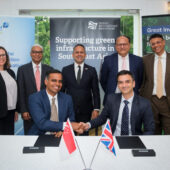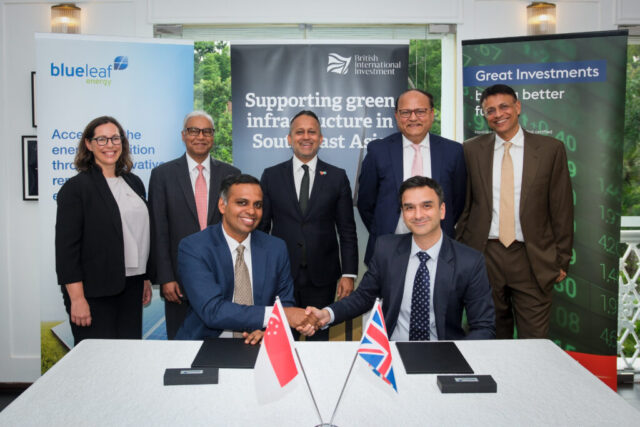A Rainforest Foundation Norway and the Rights and Resources Initiative report reveals declining financial support to strengthen tenure rights for indigenous people.

A report analysing international aid funding trends for strengthening tenure rights for indigenous peoples (IPs), local communities (LCs), and Afro-descendant peoples (ADPs), has found that funding to these communities peaked in 2021 and has been declining every year since.
The report raises concerns that the decline in funding threatens to derail progress towards achieving tenure rights targets for these communities, who themselves are seen as key partners in halting forest loss and land degradation, and restoring nature.
Published by Rainforest Foundation Norway and the Rights and Resources Initiative (RRI), the report highlights the role of the Forest Tenure Pledge, which was established at COP26 in Glasgow in 2021, in successfully mobilising new resources for IP, LC, and ADP tenure rights funding.
Between 2021 and 2024, annual disbursements for IP, LC, and ADP tenure rights averaged $728m per year, a 46% increase on the average of the previous 4-year ‘pre-pledge’ period, with over half of the global increase in funding attributable to the pledge signatories.
However, the gradual decline in funding since 2021 signals waning momentum and the report’s authors warn that this could accelerate as several major government donors either cut aid budgets or struggle to meet targets following the global shift towards security and defence spending.
Speaking to Impact Investor, Torbjørn Gjefsen, senior forest finance adviser at the Rainforest Foundation Norway, said that the decline has become more evident four years on, with funding down by 23% from 2021 to 2024.

“This drop is a growing concern especially when you consider that support for tenure rights is probably the most efficient way of curbing deforestation in tropical forests,” Gjefsen said.
“Data shows that deforestation is significantly lower in indigenous recognised territories because of the communities’ active stewardship of the land, contributing to both climate mitigation and biodiversity conservation efforts,” he added.
Tenure rights
Gjefsen explained that tenure rights encapsulate several critical dimensions to protecting the rights of indigenous and local communities and halting forest loss and land degradation.
“Getting recognition of land rights is important. Funding is used to provide support to communities to organise and to map out their territorial claims in the legal system, which involves a lot of political advocacy work. But, it is also about helping communities to actively manage and sustain these lands, whether that’s with or without recognised land rights,” he said.
“That’s a key part of what this funding has set out to support,” he added.
Together, LPs, LCs and ADPs claim at least half of the world’s land, but have legal rights to just over 11% of it. The Forest Tenure Pledge, which is backed by 25 bilateral and philanthropic donors, was developed in response to findings that less than 1% of climate finance went to projects supporting IP and LC tenure and forest management between 2011 and 2020, with a much smaller portion going directly to IP and LC organisations.
Path to Scale, an initiative that aims to scale-up global ambition to legally recognise the land and resource rights of indigenous peoples and advance the Forest Tenure Pledge, has set a target of $10bn to support the recognition of tenure rights of these communities to at least an additional 400 million hectares of tropical forest by 2030. However, the report shows a funding gap of $2.9bn to meet the funding level necessary to achieve these aims.
Resource delivery
The report also reveals that while increasing overall levels of funding is critical to delivering on the Path to Scale targets, the way resources are delivered matters just as much as the amount, pointing to a growing body of evidence that shows that funding practices determine whether finance strengthens tenure rights and supports community-led conservation or instead reinforces existing bottlenecks and inequities.
Gjefsen said more flexible funding is needed to respond more effectively to community needs and remove bureaucratic barriers.
“This will also enable more funding to go directly to communities or to indigenous and local community-led funding mechanisms,” he said.
COP30 ambitions
COP30, which is being hosted by Brazil in November 2025 in the Amazonian city of Belém, promises to be a significant global moment for accelerating progress on climate and biodiversity goals, say the report’s authors, who highlight the high ambitions signalled by the COP30 Brazilian presidency for IPs and other rights-holders.
Gjefsen said this includes the Tropical Forests Forever Facility (TFFF), a Brazil-led proposal set to launch at COP30, which seeks to compensate countries for preserving tropical forests, with 20% of funds reserved for indigenous peoples.
“This initiative has a clear ambition to generate a substantial amount of financial support for indigenous peoples and other communities, and will depend on significant levels of private investments to mobilise funding for tropical forest conservation,” he added.
Brazil’s President Luiz Inacio Lula da Silva announced at a UN event in New York on Tuesday, that his government would anchor the facility with the first $1bn investment.
The report reveals that to date, the largest donors towards advancing tenure rights for IPs, LCs and ADPs have been the World Bank and Germany, that now provide around $148m and $114m per year, respectively. Together, they accounted for over 36 percent of IP, LC, and ADP tenure rights financing from 2021 to 2024.





